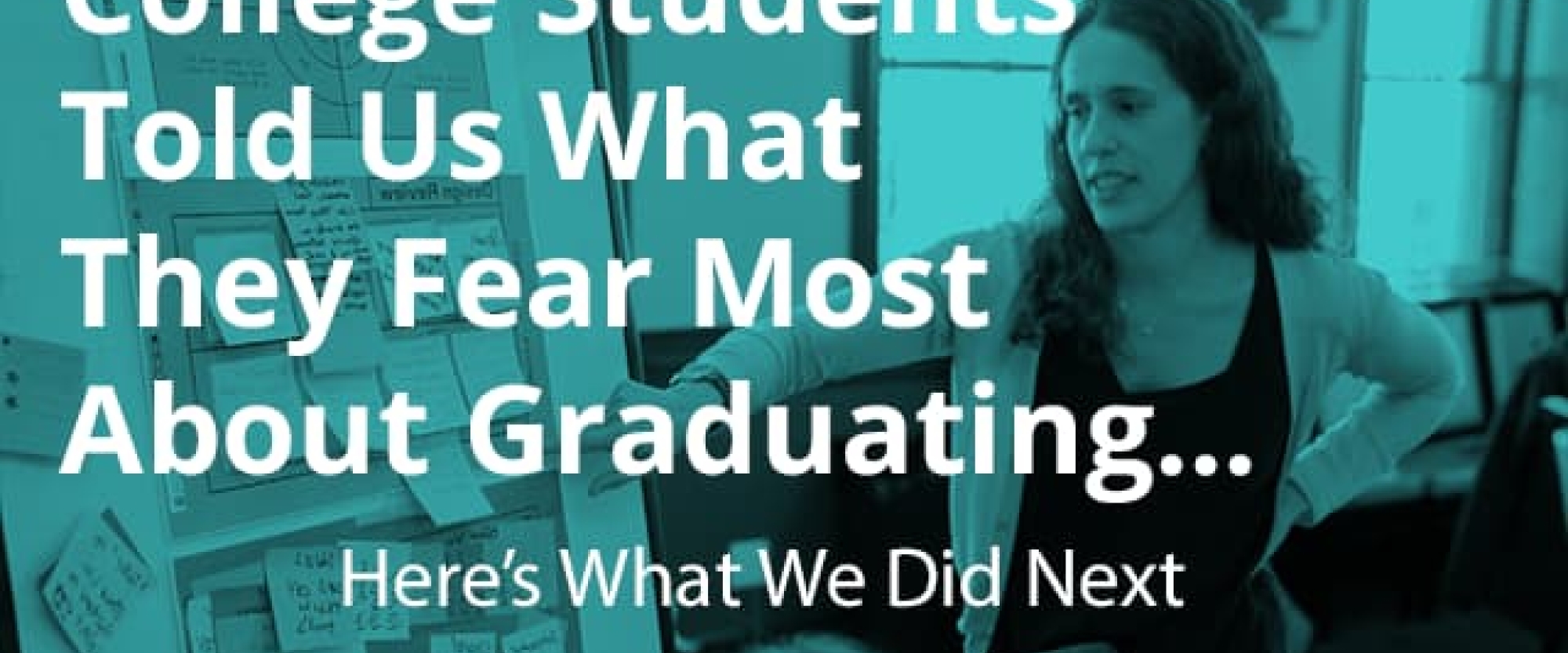Caitlin is a senior business major who hopes to work in the tech industry. She works full-time to offset tuition and living expenses. She’s afraid she can’t balance her immediate financial needs with pursuing a job change after college.
Sam is a Biology major preparing for dental school, but he really loves music. The four-year degree he’s pursuing is primarily to please and provide for his mother. A Caribbean student from a lower-income family, Sam is afraid he’ll regret not pursuing his passion.
Liz is a first-generation senior from South Florida. She’s a strong student majoring in communication disorders and pursuing a speech therapy career. Liz is afraid she won’t feel ready to enter the workforce and doesn’t even know if she’ll enjoy the field she’s chosen.
Omonleye is a junior transfer student studying graphic design. She was born in Togo and immigrated to the U.S. as a child. She’s passionate about her cultural and gender identity and worries she won’t find a job that values the unique background and perspective she brings.
All across the country, students from many different backgrounds navigate their way through college. All the while, they worry they may not be ready for what’s on the other side. Caitlin, Sam, and their peers are real students who shared their fears with leaders across the University Innovation Alliance.
The UIA recently launched an ambitious three-year project to help our universities understand how we can do a better job preparing students to make the leap from college life to work and career. We’ve convened campus teams to analyze their universities' career readiness activities. We’re going beyond reports and surveys and directly engaging students and employers through a mapping and design process.
Developing the rapid prototypes
Our goal is to develop and test new strategies for supporting students as they prepare for work. This is all a part of what we're calling the Bridging the Gap from Education to Employment project, or BGEE for short. The initiative is funded by the Strada Education Network. It uses process mapping and design thinking to understand what’s happening during the transition from college to career and explore what we can do better.
The most recent phase of this project involved four-day design sprints on each participating UIA campus. Teams comprised of seven to twelve university administrators, faculty members, advisors, and student success leaders conducted empathy interviews with students about the challenges and fears they face in making the transition from college to career.
One thing that came up again and again in student interviews was a lack of confidence—about making the right career choice, landing the right job, and navigating the world of work after college. Some said they didn't feel confident about being able to translate their classroom skills to the workforce. They didn’t know what it looked like or felt like to work in the job they thought they wanted. So, did they really want that kind of job? They didn’t know how to find the right support network. College was a community; the job search felt isolated.
Based on these interviews, each team picked a student persona and problem to address. Then they got crafty. Art supplies were scattered around the meeting area to encourage creative thinking. Staff used everything from pipe cleaners to playing cards and glitter to develop rapid prototypes of their ideas, then pitch them to students for feedback.
The "Knights at Work" Concept
By day four of this immersive process, each campus picked one or two concepts to elevate and pursue. Their ideas ran the gamut. At one institution, “Knights at Work” proposed a series of short videos of staff, faculty, and alumni talking about their career journeys in an authentic way. The idea was to alleviate students’ concerns about finding the perfect job right off the bat by providing personal stories showing that many successful career paths are nonlinear.
Another campus pitched the “Skills Map,” an interactive tool that would help students map the transferable skills they’ve gained in college and how they might be applied in a career. One institution explored dramatic redesign of the Career Services physical space in order to maximize engagement, inclusion, and community building. Colleagues at a partner campus proposed "Bridge Experience," an immersive work or experiential learning opportunity that would allow students to explore potential careers and develop transferable skills.
Participants praised the opportunity to take time from their routines and explore creative new ideas in response to student needs. Campus team members said that a particular highlight for them was conducting “empathy interviews” with students, who surprised them with their candor. Another element staff members said they appreciated was the collaborative, open minded “Yes, And!” philosophy guiding the week’s activities. They shared their eagerness to bring these strategies back into their regular work.
As universities, we focus so much on getting students to graduation - and rightly so. But do they arrive prepared and confident about what’s next? We need to bring an open ear and an innovative spirit to hearing and addressing their anxieties about what follows college life. Check out this video for a look at our college to career design thinking sprints in action.
Note: students' names and identifying information have been changed to protect their privacy.

